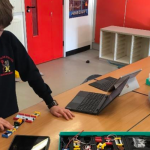In today’s rapidly changing world, teaching sustainability has become more important than ever. As educators, we play a crucial role in shaping the next generation’s understanding of environmental responsibility and conservation. One innovative tool that has emerged to aid in this endeavor is Artificial Intelligence (AI). AI has the potential to revolutionize the way we teach sustainability, making the learning process more efficient, engaging, and impactful. In this beginner’s guide, we’ll explore how you can harness the power of AI to enhance your teaching of sustainability concepts.
1. Automating Data Analysis
One of the key advantages of AI is its ability to process and analyze vast amounts of data quickly and accurately. This can be immensely valuable when teaching sustainability, as it allows you to present real-world data to your students. AI can help you gather and interpret data related to climate change, biodiversity, pollution levels, and more. By using AI-powered tools to visualize and analyze this data, you can provide students with a deeper understanding of the environmental challenges we face and foster critical thinking skills.

2. Personalized Learning Paths
Every student learns differently, and AI can assist in tailoring lessons to individual needs. Adaptive learning platforms powered by AI can assess students’ strengths and weaknesses, adapting the curriculum accordingly. This ensures that each student receives the appropriate level of challenge and support, ultimately leading to a more effective learning experience. When teaching sustainability, personalized learning paths can help students grasp complex concepts at their own pace, increasing retention and comprehension.

3. Virtual Reality (VR) and Augmented Reality (AR)
Immersive technologies like VR and AR have the potential to transport students to different environments, allowing them to experience the consequences of unsustainable practices firsthand. AI-driven simulations can simulate the effects of deforestation, pollution, and climate change in a controlled virtual setting. This experiential learning approach can have a profound impact on students, helping them develop empathy for the planet and a stronger commitment to sustainable actions.

4. Enhanced Lesson Planning
AI can significantly streamline your lesson planning process. AI-powered tools can help you curate relevant educational resources, suggest engaging activities, and even generate assessments. This frees up your time to focus on designing creative and interactive lessons that resonate with students. Additionally, AI can recommend interdisciplinary connections between sustainability and other subjects, fostering a holistic understanding of the topic.

5. Student Engagement
Engaging students in discussions about sustainability can sometimes be challenging. AI-powered chatbots and virtual assistants can act as discussion partners, providing students with a platform to ask questions, seek clarification, and engage in meaningful conversations. These interactions can spark curiosity and encourage students to delve deeper into sustainability topics.

Ready to embark on this exciting journey of integrating AI into your teaching practice? Join Twin’s CPD training for teachers and learn step-by-step how AI can streamline your lesson planning process, save time, and enhance student engagement. Gain confidence in using AI tools and be at the forefront of educational innovation.
Click now to register for Twin’s CPD Training!
Sarah Evans 🖋️
Science Teacher



